The chance discovery of an old photograph has led to a call to find the descendants of a much-loved Elgin Academy science teacher and Grantown Grammar School headmaster.
Lawyer and author Iain Leighton came across a photograph of a dashing young man in a kilt as he was going through one of his aged aunt’s old albums while visiting her in Monifieth.
It wasn’t a family photo, and at first his aunt couldn’t remember who the subject was, but once she did, Iain was completely intrigued.
He said: “It turned out to be a photo of Dr James Bain, who was a legend at Elgin Academy, not only highly respected as a teacher, but also much loved by his pupils.
“He made an enormous impression on my father and his brother John, I remember them talking about him.”
Piecing clues together, Iain concluded that his late uncle John would have taken the picture, as a 15-year-old in the Cairngorms in the spring of 1939.
Why were they visiting the Cairngorms?
Because one of the many formative and character-building things Dr Bain did for his pupils was to procure the use of a bothy for Elgin Academy at Glenmore and take groups of pupils hiking and camping there.
He also led Kemsley scholarship pupils on visits to St Valery in the 1950s, and notably among his pupils, put an end to the ‘sadistic tradition of ducking’ where senior boys had their heads ducked in basins of icy water, ‘irrespective of whether they had washed their hair the night before,” observed S4 pupil Sarah Coueslant in 1968, “If lucky, they escaped with a broken nose and fractured skull.”
Early life in Wick
James Bain was born to Mr and Mrs R P Bain of 13 Huddart Street, Wick.
He went on to graduate in science from Edinburgh University before becoming a science teacher at Elgin Academy — but that summary oversimplifies the massive talent of the man.
James was an accomplished sportsman, a University ‘blue’ who played for Edinburgh City FC and went on to play centre-forward for Elgin City FC.
Golfing was his other passion, and he became a top amateur, becoming Moray County Golf Champion in 1938, going on to captain Elgin Golf Club in 1946-47, and become president of the North District of the Scottish Golf Union in 1967.
Things didn’t always go smoothly for the popular Dr Bain in the lab, however, sometimes getting in the way of his sporting career.
In 1934, he was off the pitch for several weeks after being burned in the lab and nearly losing his sight.
A quantity of potassium with which he’d been demonstrating to a class suddenly flared up, causing extensive burns on his face.
His sight was saved, but he was much missed on the Elgin City pitch for the duration.
Discovering a wreck
In August 1945, Dr Bain made the news after he and an RAF friend on leave made the grisly discovery of a plane crash site, complete with five bodies, in a remote area of the Cairngorms where they were hiking.
He told The P&J: “We were making to the north top of Ben-a-Bhuird when we came across parts of the fabric of a plane.
“Farther up we discovered a part of one of the wings and on one of the ridges of the Ben, the plane itself.
“It was completely wrecked, although not burned. We assumed it must have landed in snow as the twin engines were not badly damaged.”
His companion, flight lieutenant Archie Penny said the tail unit of the Oxford plane was the only bit that was more or less intact.
The pair had to deal with the discovery of five bodies. The men were Czechs, on an RAF training exercise from Oxford almost eight months earlier.
Cairngorms a place of joy
But usually, the Cairngorms were a place of joy for Dr Bain and his pupils.
He started to take his pupils to Glenmore in 1933 for summer camps lasting up to 15 days.
In 1929, the camp was held at Loch Morlich, and from 1940 to 1945 at Dalnavert, Feshiebridge.
Things changed in 1946, when the school rented a large hut from the Forestry Commission at Glenmore Lodge, furnished by Elgin Academy, with cooking and sleeping equipment for forty.
Sometimes the pupils would go on overnight camps, walking some of the highest Cairngorms.
Making school interesting for pupils
James wrote enthusiastically in The P&J: “I think we ought to have such camps for two or three weeks at a time, also during the term.
“Subjects like geography, geology, botany and even mathematics, including navigation, would be infinitely more interesting at such camps than in drab school rooms.
“Good citizenship, one of our goals, cannot be reached without training in the art of living, especially living together… living together in the Cairngorms brings out and develops all the qualities essential for leadership and good living.”
James became rector of Grantown Grammar School in 1952, retiring in 1968 to the chagrin of his pupils.
He handed over a brand new school to his successor Lewis Grant, saying the years in Grantown were some of the happiest of his life, “in which I have seen many pupils do so well in all walks of life, in all parts of the world.”
Tracking down James Bain’s descendants
At a retirement presentation, FP Club president G.E. Donaldson said: “He was always firm, fair and impartial, and considerate, in his dealings with pupils and staff.
“He earned their respect, and he earned their love.”
In 1936, James married Margaret Winchester Legge of Elgin in St Giles Church. They had a son Bruce, who later also studied at Edinburgh University.
Bruce married, and had a daughter, Tania; that much is known, but the trail ends there.
Iain Leighton, who revived Dr Bain’s memory with the discovery of the old photograph, says he would very much like to hand the picture to James Bain’s descendants.
He is working with Grantown Museum to that end, and also asks if P&J readers might be able to help track the relatives down.
Iain can be contacted here.
You might also like:
Can you help solve the mystery of this WW2 stitched artwork found in an Aberdeen cellar?
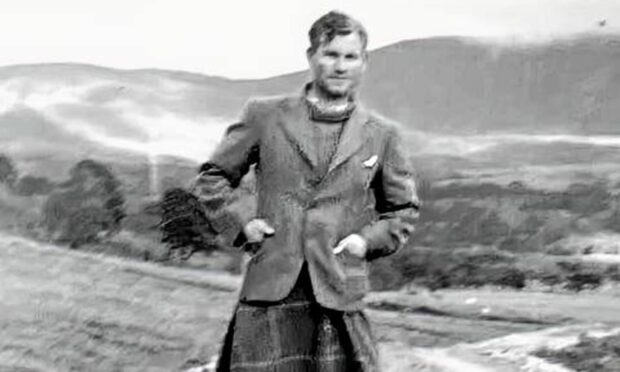


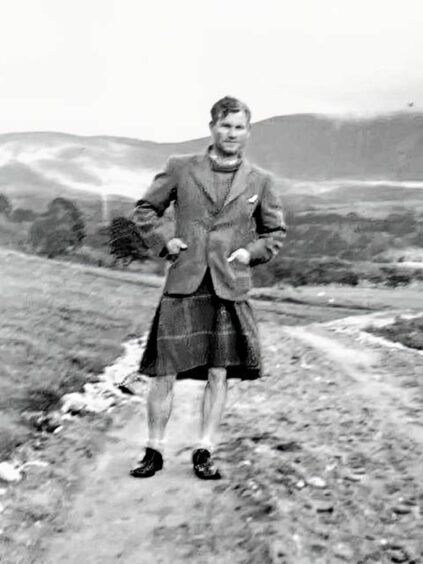
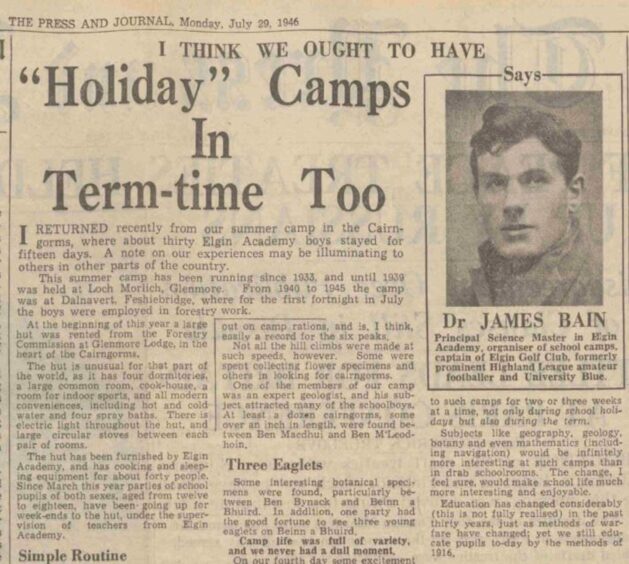
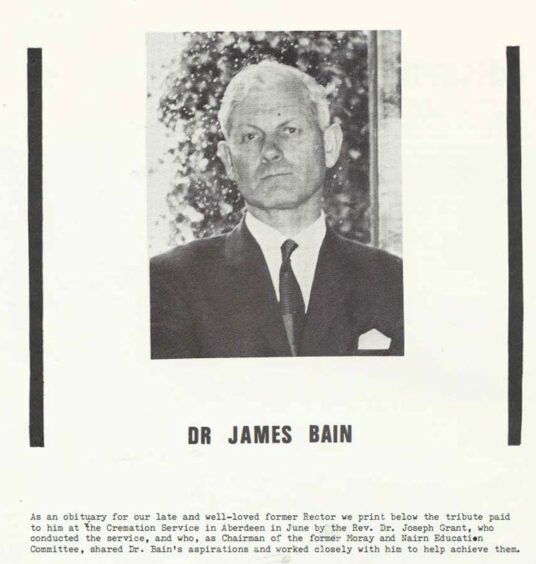
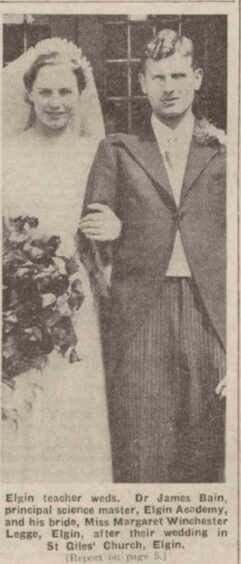
Conversation